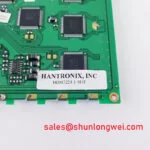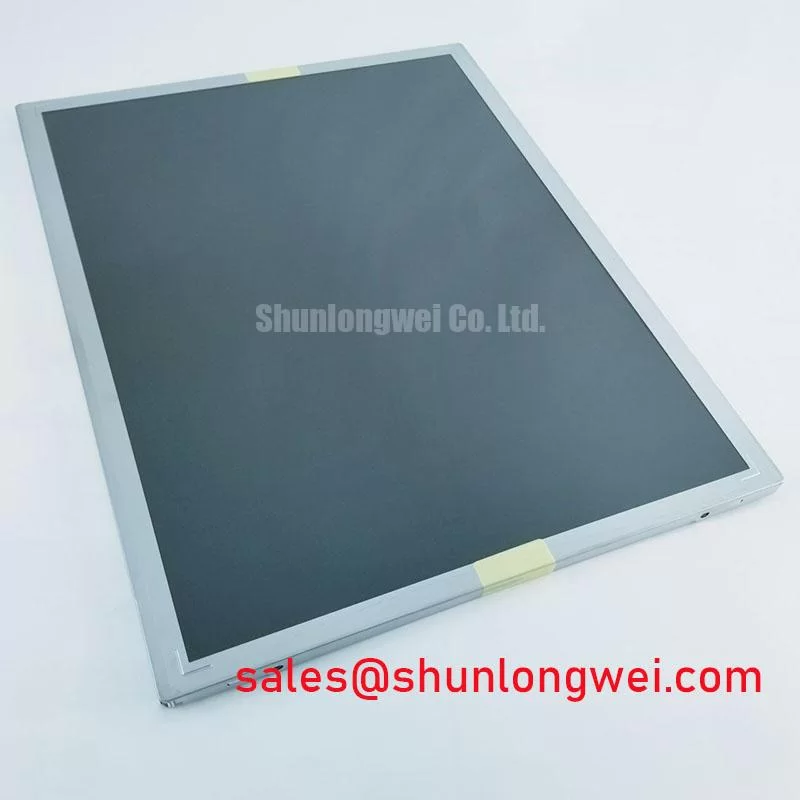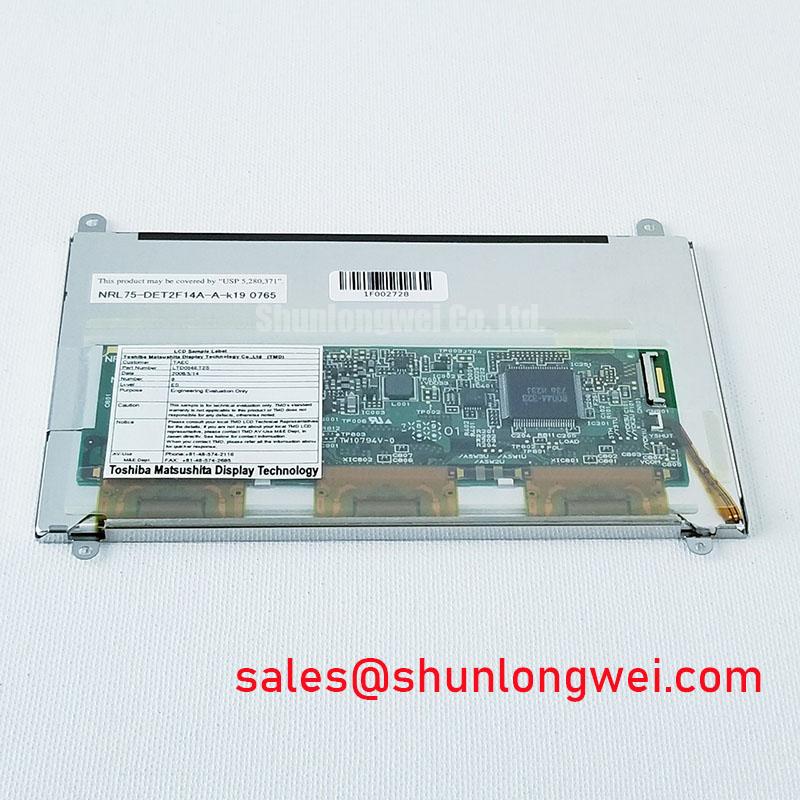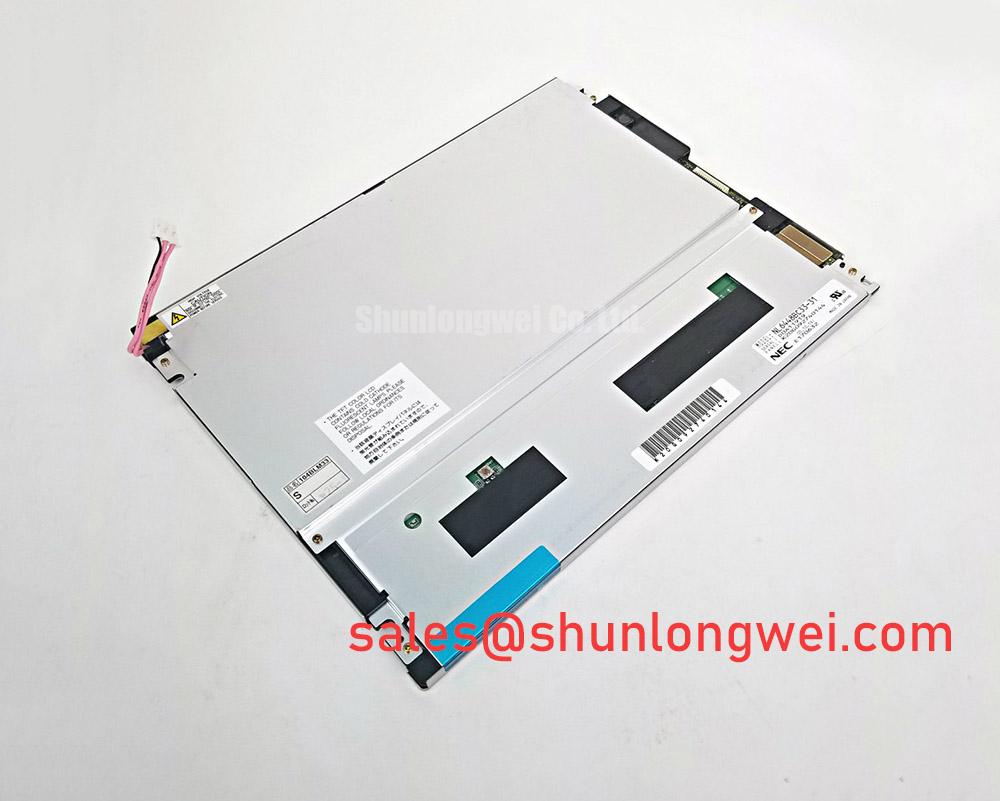HDM3224-1-9J1F: A Robust 5.7-inch Graphic LCD for Industrial HMIs and Instrumentation
Content last revised on October 4, 2025.
Engineered for Clarity and Integration
A Deep Dive into the Hantronix 320x240 Monochrome Display
The Hantronix HDM3224-1-9J1F is a 5.7-inch monochrome graphic LCD module engineered for applications demanding clear, reliable data visualization without the complexity of a built-in controller. It delivers a crisp 320x240 QVGA resolution, powered by a dependable CCFL backlight, establishing a strong foundation for industrial control panels, medical devices, and test equipment. Its key specifications are: 320 x 240 Dots | 5.0V Logic Supply | 122.0mm x 92.0mm Viewing Area. This design prioritizes direct hardware control and long-term operational stability. The controller-less architecture provides engineers with maximum flexibility for system integration, allowing for custom driver development tailored to specific performance needs. For systems requiring a different form factor or backlight technology, the related KCG057QV1DB-G000 offers an alternative in a similar resolution class.
Key Parameter Overview
Specifications Profile: Understanding the Display's Core Capabilities
The technical specifications of the HDM3224-1-9J1F define its suitability for integration into a wide range of electronic systems. The module's physical dimensions and electrical requirements are critical for mechanical and electrical design phases, ensuring seamless compatibility with the host device.
| Parameter | Specification | Engineering Value |
|---|---|---|
| Display Resolution | 320 x 240 Dots | Provides QVGA resolution, offering a clear and sufficient pixel density for displaying graphical user interfaces, waveforms, and detailed system status information in industrial and medical applications. |
| Module Dimensions | 167.0mm (W) x 109.0mm (H) x 11.0mm (T) | The 5.7-inch diagonal size offers a significant viewing area while maintaining a relatively compact and slim profile, simplifying mechanical integration into panel-mount or portable enclosures. |
| Viewing Area | 122.0mm (W) x 92.0mm (H) | A generous active display area ensures that critical data is easily legible from typical operating distances, enhancing user efficiency and reducing potential for error. |
| Logic Supply Voltage (VDD) | 5.0V (Typical) | Standard 5V logic level simplifies power supply design, aligning with common microcontroller and logic circuit power rails found in legacy and new system designs. |
| Backlight Technology | CCFL (Cold Cathode Fluorescent Lamp) | Delivers bright, even illumination across the screen. CCFL backlights are a mature and cost-effective technology known for their stable performance in various industrial environments. |
| Operating Temperature | 0°C to 50°C | Designed for stable operation in controlled indoor environments such as laboratories, factory floors, and medical facilities, ensuring consistent performance within its specified range. |
Download the HDM3224-1-9J1F datasheet for detailed specifications and performance curves.
Application Scenarios & Value
System-Level Benefits in Instrumentation and Control Systems
With its straightforward design and robust feature set, the Hantronix HDM3224-1-9J1F is best suited for applications where clarity, reliability, and direct control are paramount. Its controller-less nature is a distinct advantage in specific engineering scenarios. For instance, in the development of a custom patient monitoring system, engineers can use an FPGA or a high-performance microcontroller to drive the display directly. This allows for precise, real-time rendering of vital signs like ECG waveforms, where the timing and data latching control offered by the module's simple parallel interface (D0-D3, LOAD, CP) is critical. This level of control avoids the overhead and potential latency of an integrated controller, ensuring the display updates are perfectly synchronized with the data acquisition hardware. The module's standard operating temperature range of 0°C to 50°C makes it a reliable choice for indoor environments like hospitals and test laboratories. The use of a TFT-LCD with a CCFL backlight provides a high-contrast visual output essential for interpreting critical data accurately.
Frequently Asked Questions (FAQ)
What is the primary benefit of the HDM3224-1-9J1F having no built-in controller?The absence of an on-board controller grants design engineers complete control over the display's timing and operation. This is crucial for applications requiring custom display drivers or real-time data visualization where synchronization with external hardware is non-negotiable.
How is the display's data updated with a 4-bit parallel interface?Data is sent to the display in a serial-like fashion using the 4-bit data lines (D0-D3). Each clock pulse on the CP (Data Shift) pin shifts the data, and the LOAD (Data Latch) signal latches the data into the driver ICs, making the interface compatible with a wide range of microcontrollers and FPGAs.
Is the CCFL backlight replaceable?While CCFLs are known for their long operational life, they are consumable components. The feasibility of replacement depends on the mechanical design of the end-product's enclosure. The display requires a separate high-voltage inverter to power the CCFL, which should be considered during system design.
What are the power supply requirements for this module?The module requires three separate voltages for full operation: a +5V supply for the logic circuits (VDD), a negative voltage supply around -22V for the LCD drive (VEE), and a high-voltage AC supply from an inverter for the CCFL backlight.
What does the 1/240 duty cycle signify for this display?The 1/240 duty cycle refers to the multiplexing drive method used for the passive-matrix LCD. It means each horizontal line (row) of the display is actively driven for 1/240th of the total frame time. This is a standard driving scheme for a 320x240 resolution graphic display and is fundamental to how the image is formed and sustained.
Technical Deep Dive
Design Considerations for Integrating a Controller-less Display
Integrating the HDM3224-1-9J1F requires a more fundamental understanding of display driving than modules with built-in controllers, but it offers unparalleled flexibility. The engineering team must manage the display refresh timing in software or hardware. Think of it like conducting an orchestra versus playing a record. An integrated controller is the record player—it handles everything automatically. A controller-less display, however, requires the host processor to be the conductor, precisely timing every signal—the data bits, the clock, the latch—to create a stable image. This direct control is essential for applications like retrofitting legacy systems where the existing timing signals from an older CRT controller must be matched, or in cost-sensitive designs where the processing power of the main MCU can be leveraged to eliminate the cost of a dedicated display controller IC. Successful implementation involves careful management of the VDD (+5V), VSS (Ground), and VEE (-22V) power sequencing to prevent damage to the LCD driver ICs during power-up and power-down cycles.
Get in Touch
For technical inquiries, volume pricing, or to further discuss how the HDM3224-1-9J1F can meet the specific demands of your application, please contact our technical sales team for expert guidance and support.















